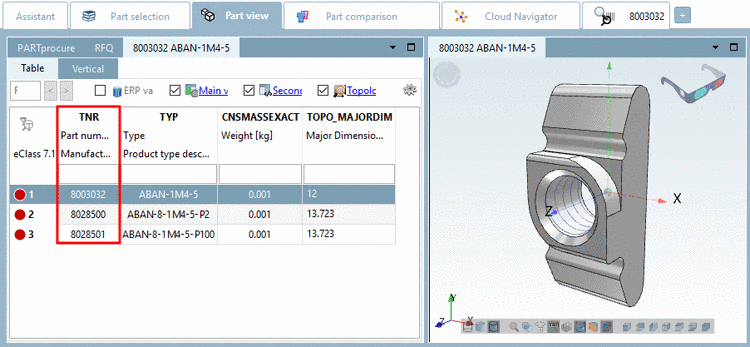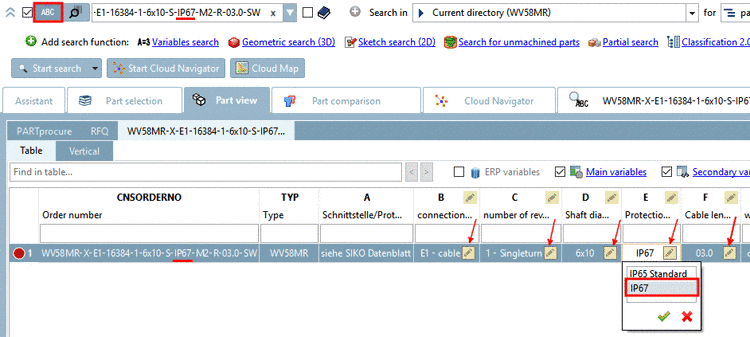Manual
Login
Our 3D CAD supplier models have been moved to 3Dfindit.com, the new visual search engine for 3D CAD, CAE & BIM models.
You can log in there with your existing account of this site.
The content remains free of charge.

Top Links
Manual
-
Classification according to CNSORDERNO or CNSTYPECODE?
-
CNSORDERNO = Order number (article number) describes a fixed defined catalog product, where each product corresponds to a fixed PARTsolutions project row.
Common product fields are: Angles, switches, bolts, nuts, etc.
-
CNSTYPECODE = Type code (article code / order code) describes a configurable product (with possibly complex set of rules), where the product corresponds to a table row with value range (one or several yellow fields) and a type code / key resulting from it.
Common product fields are: Cylinders, motors, gears, linear modules, if configurable and customizable.
-
-
Enter article number in eCATALOGsolutions correctly
Hidden variables can also be used for a mapping. The variable is considered when indexing and can be searched.


![[Note]](/community/externals/manuals/%24%7Bb2b:MANUALPATH/images/note.png)





